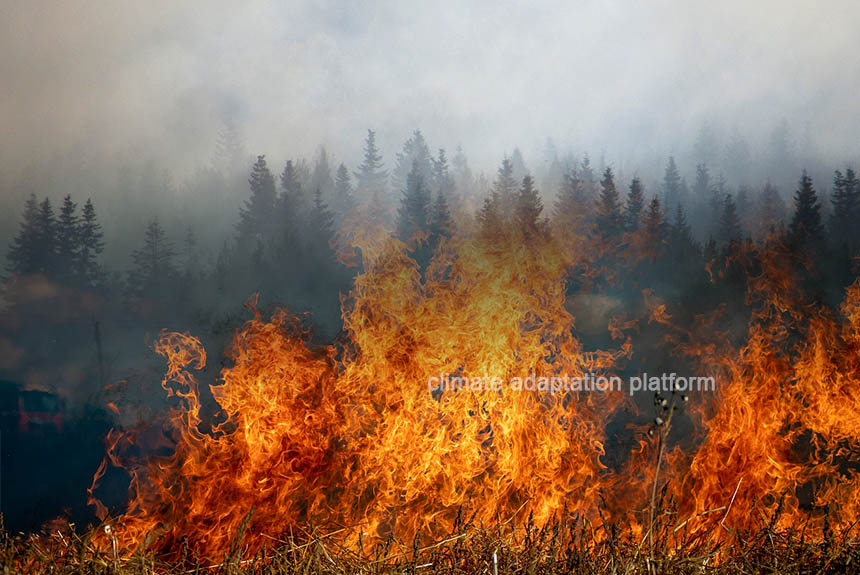California’s Park Fire has been declared the fifth-largest wildfire in the state’s history. The fire began on Wednesday, 24 July 2024, and burned more than 380,000 acres or 601 square miles, according to a park fire incident report from CalFire, the state’s fire department. The area currently burning is bigger than Los Angeles, and as of 30 July, it is one of the nearly 100 large active wildfires burning in the country.
The fire in Butte County, where the Park Fire started, has an acreage of more than 53,000, and in neighbouring Tehama County, an area of more than 330,500 acres is ablaze.
Authorities said that the historic wildfire was ignited by a man named Ronnie Dean Stout II when he pushed a burning car down a ravine in Chico. He was charged with reckless arson and related charges on Monday, 29 July 2024.
The blaze forced the evacuation of more than 25,000 people in four counties – Butte, Plumas, Shasta, and Tehama, destroyed 192 structures and damaged 19 others across two affected counties.
As of 30 July, an update from Cal Fire says that more than 383,000 fires are still actively burning, 14% of which are contained. The steep terrain, many inaccessible areas, wind, and low moisture make their work to suppress the fire difficult. The area currently burning around 600 square miles is more than 12 times bigger than San Francisco and larger than Los Angeles City.
CalFire tweeted, “As of 30 July 2024, wildfires have scorched a staggering 751,327 acres across our state. This year’s wildfire activity is 2,816% higher than last year, 29 times the amount of acreage burned. The numbers are a stark reminder: 95% of wildfires are caused by humans. Stay vigilant—follow fire safety guidelines, maintain defensible space, and report suspicious activities. Let’s prevent fires from accidental sparks like dragging trailer chains or improper campfires. One less spark means one less wildfire.”

California experienced “Amped Up” Wildfires and a more extended fire season.
According to experts, the increasing wildfires in the US and Canada are attributed to fire suppression policies and climate change. To prevent large-scale, devastating fires like the ones currently occurring in California and Canada, experts suggest adopting the practice of using smaller controlled fires, a technique employed by Indigenous people for centuries.
However, they acknowledge that it’s challenging to implement this practice today due to the lack of extensive open landscapes where millions of acres can burn without intervention, leading to the occurrence of intense and rapidly spreading fires.
According to ABC News, experts say climate change is worsening wildfires.
Jennifer Marlon, a research scientist at Yale’s School of the Environment, described the recent fires as “amped up.” She said the number of wildfires has not necessarily increased as it has become larger and more severe because of the warming atmosphere, and climate change will make these unnatural disasters more frequent.
Benjamin Hatchett, a fire meteorologist with the Cooperative Institute for Research in the Atmosphere with Colorado State University in Fort Collins, says that ten of California’s 20 largest fires occurred in the last five years. Hatchett notes that climate change is creating more variability in weather conditions – creating more very wet years followed by very dry ones – drying up plants and vegetation and setting up for large wildfires.
Daniel Swain, a climate scientist with the University of California, Los Angeles, and the National Center for Atmospheric Research, says that wildfires are burning with intensity now and straight into the night and continuing into the next day, not giving firefighters a chance to rest. He adds that fires also burn over a longer fire season than they used to.
Severely hot fires are also altering the forest ecosystem, says Swain, and they are not coming back the same way after getting scorched. In some cases, trees are replaced with flammable invasive grasses.
So, not only is climate change making these wildfires more severe and intense, but it is also affecting the ecosystem’s recovery afterward.
Source:
Bacon, J. & Benda, D. (2024, 30 July). Arson suspect claims massive California blaze was an accident. USA Today. Retrieved from https://www.usatoday.com/story/news/nation/2024/07/30/california-wildfire-park-fire-arson-charges-updates/74598770007/
Romine, T., & Cullinane, S. (2024, 30 July). Arson-sparked Park Fire is now California’s fifth-largest wildfire. CNN. Retrieved from https://edition.cnn.com/2024/07/30/us/park-fire-arson-arraignment-wildfires/index.html
Park Fire. (2024). Cal Fire. Retrieved from https://www.fire.ca.gov/incidents/2024/7/24/park-fire
Hollingsworth, H. (2024, 28 July). Fires in the West are becoming ever bigger, consuming. Why and what can be done? ABC. Retrieved from https://abcnews.go.com/US/wireStory/fires-west-becoming-bigger-consuming-112339017



Leave a Reply